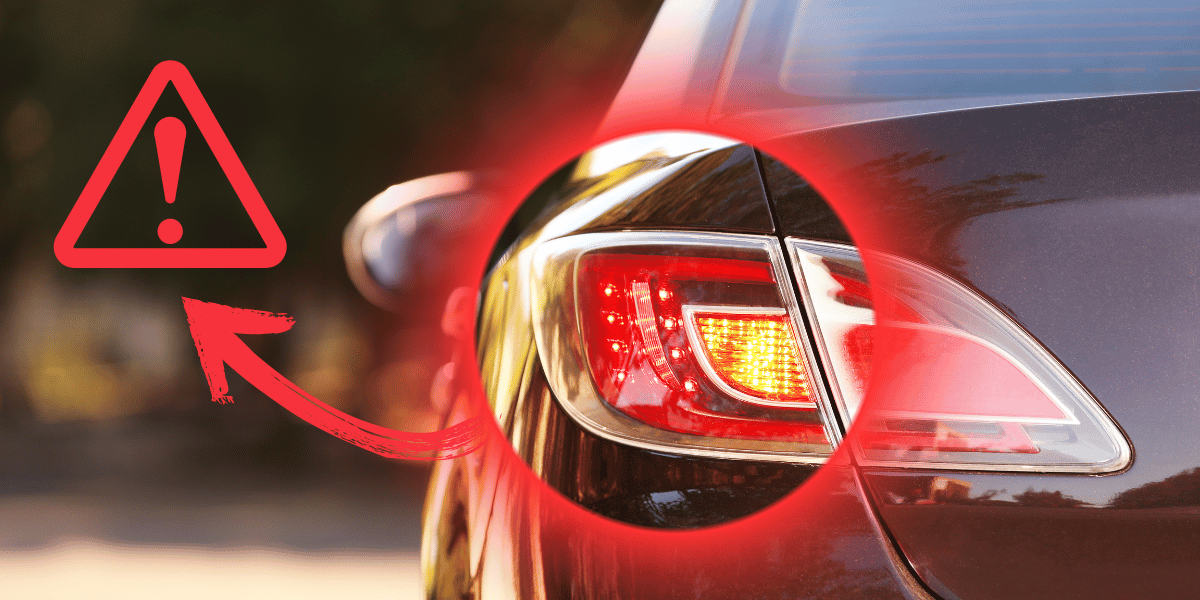Leaks in the transmission fluid are like unwanted guests at a car party. They just show up out of the blue, cause a lot of damage, and leave you with a big fix bill. But don’t worry, you’re not the only one who feels this way. Anyone who wants to learn more about their car or is a seasoned gearhead can use this blog post to learn how to find out why their transmission fluid is leaking and fix it.
It’s windy outside, your best songs are playing, and you feel free in a way that only the open road can give you. Then, out of the corner of your eye, you see what looks like a scary puddle forming under your car. When you see that your car has left a troublesome mark—a puddle of transmission fluid—your heart sinks and fear sets in.
We’ll take the mystery out of transmission fluid, look at the most common reasons why it leaks, and give you the information you need to deal with this problem head-on. Make yourself a cup of coffee and settle down. Now let’s learn more about transmission fluid leaks.
What is Transmission Fluid and Why is it Important?
Think of your car’s transmission as the director of the orchestra that is its engine. It coordinates the gears and makes sure that the power from the engine gets to the wheels quickly. Imagine transmission fluid as the conductor’s magical baton, leading and harmonizing the symphony’s complex movements.
Transmission fluid is a special kind of coolant and lubricant that is very important to the health and operation of your car’s transmission system. It’s not just oil; it’s what keeps your engine working. This is why it’s important:
- Lubrication: Just like joints need lubrication to move easily, the parts inside your engine need it too. Transmission oil protects and cushions important parts, so they don’t rub against each other and wear out as quickly. This grease keeps things from getting too hot and breaking.
- Heat: Your transmission works hard, especially when you’re driving for a long time or pulling a big load. Fluid in transmissions cools the engine by removing heat from gears and other parts that are constantly rubbing against each other. This keeps the transmission from getting too hot, which could damage it badly.
- Cleaning: Transmission oil cleans the engine by stopping sludge and dirt from building up. Over time, contaminants can build up in the transmission, which can make it less effective. Using clean oil in your transmission will make it work better.
- Hydraulic Power: To change gears, many modern transmissions use hydraulic systems. When you change gears smoothly, transmission fluid is very important. That’s what makes gear changes smooth and smooth.
Now, not every transmission oil is the same. There are various types to meet the specific needs of different cars. Auto Transmission Fluid (ATF) and Manual Transmission Fluid (MTF) are the most popular. Automatic transmissions use ATF and manual transmissions use MTF. Each type of transmission needs a different type of transmission fluid with different features.
It’s important to know what kind of fluid your car needs to keep its engine healthy. To make sure you’re using the right fluid, look at your car’s owner’s instructions or talk to a reliable mechanic.
To put it simply, transmission fluid is the unsung hero that keeps the transmission in your car running smoothly. It keeps your car running smoothly, keeps it cool, cleans, and makes shifting gears easier. So, the next time you see a puddle under your car, think about how important this fluid is for keeping your ride running smoothly.
How to Tell if Your Car is Leaking Transmission Fluid?
Transmission fluid leaks can be hard to spot, but most of the time they leave behind clear evidence. If you can spot these signs early, you can avoid having to pay for expensive fixes later on. Look for these things:
- Puddles Under Your Car: A puddle growing under your car, usually near the front or middle, is the most obvious sign of a transmission fluid leak. Transmission oil is usually red or brown, and you can tell it apart from other auto fluids by its unique color.
- Burning Smell: If you smell something burning, especially when you get out of your car after driving, it could mean that fluid is leaking from your transmission onto a hot engine part. The heat makes the fluid burn, giving off this strong smell.
- Gears Slipping: If your car’s transmission starts to slip between gears or feels less responsive, it could be because of a leak that has caused the fluid to level out. Without the right amount of oil, the transmission won’t work right.
- Strange gearbox Noises: If the fluid level is low, there may be more friction and wear inside the gearbox. This can make the car make strange sounds when you drive or change gears, like whining, clunking, or clicking.
- Warning lights: A lot of new cars have sensors that can tell when the transmission fluid level is low or there are problems with the transmission. There may be a light on your panel that tells you that your transmission fluid level is low.
The more often you check your transmission oil, the better, so you can catch any problems early and stop them from getting worse. How to do it:
- Find the Transmission Dipstick: In most cars, checking the level of the transmission fluid is the same as checking the level of the engine oil. You need to find the dipstick for the transmission. It’s usually near the back of the engine bay.
- Park on a Level Surface: Make sure your car is parked on a flat surface and that the engine is warm. For specific directions on how to check the transmission fluid, look in your owner’s manual.
- Take out the dipstick carefully: Use a cloth or paper towel to clean the transmission probe after taking it out.
- Check the Level and Color of the Fluid: Put the tester back in all the way, and then pull it out again. Use the dipstick to check the oil level. It should be between the “full” and “low” marks. Take note of the fluid’s color as well. Transmission fluid that is healthy is generally pink or red. It could mean there is a problem if it’s brown, dark, or smells like burnt food.
It is very important to fix the problem right away if you notice a low fluid level or a color or smell that doesn’t seem right. Check your owner’s manual for instructions on how to add fluid, and you might want to have an experienced mechanic look over your car to find and fix any leaks.
Regular maintenance and being careful can help you find transmission fluid leaks early, which will keep your transmission running smoothly and stop bigger problems from happening in the future.
How do transmission fluid leaks happen?
There are many things that can lead to transmission fluid leaks, but some are more common than others. These are the main culprits:
- It’s possible for the seals and gaskets that keep transmission oil in to wear out over time. This can happen because of heat, pressure, and normal wear and tear. When these parts break down, they can crack or stop working as well, which can cause leaks.
- Transmission Pans That Are Loose or Broken: The transmission pan is an important part that holds the transmission oil. As a result of becoming loose, broken, or cracking, fluid may appear.
- Transmission Cooler Lines That Don’t Work Right: A lot of cars have lines that bring oil to and from a separate cooler. When these lines rust, get holes, or come free, fluid can leak out.
- Trouble with the Torque Converter: Fluid leaks can happen when there are issues with the torque converter, like worn covers or a broken converter body. The torque converter is what links the engine to the transmission. The seals in this part can break.
- Problems with the Pan Gasket: The gasket that holds the transmission pan to the transmission body can wear down over time, letting fluid leak out. Changing this gasket as part of regular repair can stop leaks from happening.
- Too Much Heat: High temperatures can break down transmission oil faster and make it leak more easily. This is why it’s so important to make sure your engine is cool.
- Accidents or hits to the bottom of your car can damage transmission parts, which can cause leaks. After something like this happens, you need to check your transmission for damage.
- Filling too much or too little: Problems can happen if the transmission oil levels aren’t right. If you overfill, the pressure can get too high, and if you underfill, the greasing might not be good enough.
What are the safety measures and precaution’s to avoid Transmission Fluid From Leaking?
It’s better to avoid transmission fluid leaks than to have to fix them. Here are some things you can do to stay safe:
- Regular Maintenance: Do the maintenance that your car’s owner’s manual tells you to do, like changing the clutch fluid. When you do routine maintenance, you can find and fix small problems before they get worse.
- Keep an eye on the fluid levels: As we already said, use the dipstick to check your transmission oil often. It is very important to keep the right amount of fluid.
- Take Care of Warning Signs: If you see any of the previous warning signs of a transmission fluid leak, you should take care of them right away. Early action can stop harm from getting worse.
- Don’t let it get too hot: Make sure your transmission is well cooled, especially when it’s hot outside or you’re driving a lot. If you live in a hot area or tow big things, you might want to add an external transmission cooler.
- Be Careful Off-Road: If you take your car off-road or drive on rough ground, be aware that you could damage the transmission from impacts. Be careful when driving in these situations.
- Talk to a Professional: If you’re not sure about your transmission’s health or think there might be a leak, talk to a qualified mechanic. They can do a full inspection and tell you what fixes you need.
You can keep your car’s transmission in good shape and save time and money in the long run by learning about the most common reasons why transmission fluid leaks happen and taking steps to stop them.
How to fix a transmission fluid leak?
There are different ways to fix a transmission fluid leak based on why the leak is happening. It is possible to follow these general steps, though:
- Find where the leak is coming from: If you look for signs of damage in the transmission, like old seals, broken gaskets, or cracked hoses, you can do this.
- Clean up the spot where the leak is: This will help you see the leak better and figure out where the trouble is coming from.
- Fix the leak: Changing a worn-out seal, gasket, or hose may be part of this. If a cracked gearbox pan is causing the leak, you may need to replace the pan.
- Put new fluid into the transmission: After you fix the leak, you will need to put new oil in the transmission. Make sure you use the right kind of oil for your car.
Here are some tips for fixing a transmission fluid leak:
- Make sure you use the right kind of transmission oil for your car. Your owner’s manual will tell you what kind of fluid to use.
- Be careful not to put too much in the transmission. If you fill the engine up too much, it can get too hot and break.
- Getting a new transmission pan as soon as possible is important if the leak is caused by a cracked pan. When the pan cracks, dirt and other things can get into the transmission and do a lot of damage.
- You should take your car to a qualified mechanic if you don’t feel safe fixing a transmission fluid leak yourself.
Is a transmission leak expensive to fix? How much does it cost to fix it?
If you notice a leak in your transmission oil, you need to fix it right away to keep the damage from getting worse. The cost of fixing a transmission fluid leak depends on a lot of things, with how bad the leak is being one of the most important ones. We’ll talk about the costs of fixing damage of different levels of seriousness and other things that can affect those costs:
Severity of the Leak:
- Cost Range for Small Leaks (Seals or Gaskets):
Small leaks of transmission fluid, like those caused by old gaskets or seals, can usually be fixed for $150 to $250 dollars. This price covers both the parts and the work.
Ways to Fix It: For small leaks, replacing the damaged seal or gasket is usually enough to fix it. It is necessary to drain the transmission fluid, repair the damaged part, and then add the right amount of fluid to the car.
- Small to Medium Leaks (Multiple Seals, Fluid Flush):
Price Range: Transmission fluid leaks that aren’t too bad usually cost between $350 and $550 to fix. This could mean replacing multiple seals or flushing the fluid. This price includes both parts and work.
How to Fix It: For moderate leaks, mechanics may change more than one seal or gasket that is causing the leak. It may also be necessary to flush the system with fluid to make sure it is completely clean and full.
- Major Leaks (Transmission Overhaul or Replacement):
Price Range: For bigger transmission fluid leaks, which often need a full overhaul or even a replacement, it can be much more expensive to fix, with costs running from $2,000 to $4,000 or more. These prices include parts, labor, and any work that needs to be done to repair or replace it.
The transmission may need to be taken apart, its broken parts rebuilt, and then put back together again during major repairs. In serious cases, replacing the whole transmission may be the most cost-effective thing to do.
Other things that affect the cost of repairs:
Besides how bad the leak is, there are a few other things that can affect how much it costs to fix a transmission fluid leak:
- Rates for Labor: The cost of labor can change depending on where the job is and how hard it is. Jobs that need a lot of special skills or take a long time may have higher wage fees.
- Parts: The price of replacement parts like seals, gaskets, or transmission cooler lines is based on the make and type of your car. Parts for some cars may need to be more expensive.
- Transmission Type: The cost of repairs can depend on whether your car has an automatic or manual transmission. It may cost more to fix an automatic transmission because they are more complicated.
- Expertise of the Mechanic: Transmission experts or mechanics with a lot of experience may charge more for their work, but they can do it faster and better.
- Additional Repairs: A transmission fluid leak can sometimes damage other parts, which can make the cost of repairs go up. The specifics of these extra fixes will depend on the situation.
- Age and Mileage of Vehicle: Repairs for older cars with more miles may be more expensive because they need more work.
In conclusion: Fixing a transmission fluid leak can cost a lot of different amounts, based on how bad the leak is, the type of car, the cost of parts and labor, and how skilled the mechanic is. If your transmission oil leaks, you should fix it right away to stop more damage and save money on repairs.
How to Get Transmission Fluid Leak Repairs for Less Money? (Money saving Tips)
- Get quotes from more than one mechanic before you decide which one to do the work.
- Find out if the mechanic is running any deals or savings.
- You might want to have a gearbox specialist fix the leak. A lot of the time, specialty transmission shops know how to quickly and effectively fix transmission fluid leaks.
- If you know what to do and have the right tools, you might be able to fix a small problem yourself. You should talk to a mechanic first, though, before you try to fix your car’s drive system on your own.
How to Find a Transmission Fluid Leak on Your Own? (DIY Method)
Finding a transmission fluid leak in your car can save you time and money because fixing it early can keep you from having to pay for more expensive fixes later on. A skilled mechanic is the best person to get a full diagnosis and repair, but there are things you can do to find a transmission fluid leak on your own. Here is a do-it-yourself plan to help you figure out what’s wrong:
- Park Your Car on a Level Surface: First, park your car on a flat, level surface. Spreading the transmission fluid out evenly like this makes it easy to find any leaks.
- Identify the Transmission: Figure out where the transmission is in your car. It’s usually under the engine and connects to the driveshaft.
- Look for Puddles: Under your car, look for puddles or spots of red or brown fluid. Most transmission fluid is red or brown, and any pools of it that you can see are a clear sign of a leak.
- Check the Transmission Pan: The transmission pan is where a lot of transmission fluid leaks happen. Look around the sides of the pan with a flashlight for signs of water, dripping fluid, or rust. If you find any loose nuts, tighten them up, but be careful not to do it too much.
- Check the Transmission Lines: Fluid goes to and from the radiator through the transmission lines. Check these lines for damage like cracks, rust, or links that aren’t tight. If you find problems, you might need to get new lines or make the connections tighter.
- Check the gearbox Gasket: A gasket keeps the gearbox pan closed. Check to see if there are any tears, wear, or leaks that you can see. It is necessary to repair any gaskets that are showing signs of damage.
- Check the Seals: The transmission has several seals, such as the input shaft seal, the output shaft seal, and the axle seals. If you see signs of fluid around these seals, you may need to repair them.
- Keep an eye on fluid levels: If your car has one, use the dipstick to check the level of the transmission oil. Low amounts of fluid could mean there is a leak. Turn on the engine and make sure the transmission is in “Park” or “Neutral” before you check the oil.
How to Fix Transmission Fluid Leaks Without a Professional? (DIY)
You can try to fix the problem yourself if you’ve found a transmission fluid leak and decided it’s not too big of a deal. A skilled mechanic should, however, handle bigger problems. Here are some easy ways to fix small transmission oil leaks on your own:
- Adjust Loose Bolts: If the leak is coming from the transmission pan or other bolted parts, carefully tighten them to the manufacturer’s specs. Keep the screws from being too tight, as this can damage the cover or seal.
- Change a Damaged Gasket: You can change a damaged transmission pan gasket if you know what it is. Take out the pan, drain the transmission fluid, clean the sides, and put in a new gasket. When putting it back together, make sure you use the right torque specs.
- If you need to fix a transmission fluid leak: You can get items that are either sealants or additives. By expanding and sealing small gaps, these products may briefly stop small leaks. Pay close attention to the product’s directions.
- Adding to a transmission can help stop leaks: Some additives can make seals grow and get better over time, which may help stop or reduce small leaks. These should only be used as a short-term fix until a real fix can be made.
- Check Fluid Levels: If you try to fix the problem yourself, make sure you keep an eye on the fluid levels to make sure the leak is fixed and the level stays right.
Remember that do-it-yourself methods might work for small leaks but might not be able to fix bigger transmission problems. If the leak stays the same or gets worse, or if you have problems with the clutch, you should get it checked out by a professional mechanic right away. If you don’t fix transmission fluid leaks, they can do a lot of damage to your car’s transmission system.
Transmission Fluid Leak Consequences: Why You Should Fix It ASAP?
Ignoring a leak in your transmission oil is like ignoring a time bomb under your car that is about to go off. The effects can be much worse than just an annoying drip on your garage floor every once in a while. Your car’s transmission is one of its most complicated and important parts. Its job is to make sure that power from the engine gets to the wheels quickly and efficiently. As a result of a fluid leak, it can become weak and malfunction. Not only can this make driving frustrating with signs like shifting that feels rough and a loss of acceleration, but it can also cost a lot of money.
If you don’t fix a transmission fluid leak, one of the worst things that could happen is that the transmission could fail completely. A broken or destroyed clutch can make your car useless and require pricey fixes or replacements. Imagine being in the middle of nowhere with a car that won’t move. It would be annoying and expensive. Unresolved gearbox problems can also make you less safe on the road. Power outages, shifting that doesn’t work right, and sudden transmission failure can all cause crashes or leave you stuck in dangerous situations. Basically, ignoring a transmission fluid leak isn’t just a way to save money in the short term; it’s a risk that can lead to much bigger financial, safety, and operating problems in the long run.
Why transmission fluid leaks in reverse, How to fix it?
Wear and tear on the seals over time is one of the main reasons why gearbox fluid leaks in reverse gear. The constant switching between gears, even the reverse gear, puts stress on these seals, which can cause them to crack or move out of place. Changes in weather, especially in very hot or very cold places, can also speed up the wear and tear on seals. The first step in fixing a transmission fluid leak that happens backwards is to find where the leak is coming from. This could mean looking for damage or signs of wear in the transmission pan, gaskets, and seals. Sometimes it might also mean checking the transmission lines for damage or loose links. You can fix or change something once you know where the problem is coming from. Depending on how bad the problem is, this could be anything from replacing a simple seal to doing more thorough work on the transmission. To keep your car’s transmission system from getting worse, it’s important to do regular repair and fix any leaks right away.
Frequently Asked Questions
Q: Is it OK to drive with transmission fluid leak?
A: It’s not advisable to drive with a transmission fluid leak. Continuing to operate your vehicle with low transmission fluid levels can lead to severe damage to your transmission.
Q: How long can I drive with a transmission leak?
A: The duration you can drive with a transmission leak depends on the severity of the leak. It’s best to address any transmission fluid leak as soon as possible to prevent further damage.
Q: Is transmission fluid leak serious?
A: Yes, transmission fluid leaks are serious. They can lead to reduced transmission performance and, if left untreated, can cause transmission failure.
Q: All my transmission fluid leaked out while driving?
A: If all your transmission fluid has leaked out while driving, it’s crucial to stop immediately, as continued driving can damage your transmission. Have your vehicle towed to a mechanic for repairs.
Q: What causes transmission fluid to leak into the radiator?
A: Transmission fluid can leak into the radiator due to a faulty transmission cooler, which is integrated into some radiators. A leak in this system can cause coolant and transmission fluid to mix.
Q: What color is transmission fluid leak?
A: Transmission fluid is typically red or reddish-brown, so a transmission fluid leak will often appear as a red or brownish puddle under your vehicle.
Q: How serious is a transmission leak?
A: Transmission leaks are serious and should be addressed promptly. Ignoring a transmission leak can lead to transmission damage or failure.
Q: What color is transmission fluid when it leaks?
A: Transmission fluid remains its usual red or reddish-brown color even when it leaks.
Q: Can transmission fluid get low without a leak?
A: Yes, transmission fluid can become low without an external leak. This might be due to internal transmission problems or evaporation over time.
Q: Can you lose transmission fluid without a leak?
A: Yes, transmission fluid can be lost through evaporation or due to internal transmission issues, even if there is no visible external leak.
Q: Where does transmission fluid leak from?
A: Transmission fluid can leak from various points, including the pan gasket, seals, transmission cooler lines, and other transmission components.
Q: Why is my car leaking transmission fluid?
A: Car transmission fluid leaks can occur due to damaged seals, gaskets, or transmission components, and these issues should be inspected and repaired by a mechanic.
Q: How to stop transmission fluid from leaking into the radiator?
A: To stop transmission fluid from leaking into the radiator, you’ll need to address the issue with the transmission cooler or radiator itself. Seek professional assistance for this repair.
Q: How to fix automatic transmission fluid leak?
A: Fixing an automatic transmission fluid leak involves identifying the source of the leak, which can be seals, gaskets, or damaged components, and then repairing or replacing them.
Q: Is leaking transmission fluid bad?
A: Yes, leaking transmission fluid is bad. It can lead to transmission damage or failure and should be addressed promptly.
Q: Is my car leaking oil or transmission fluid?
A: To determine if your car is leaking oil or transmission fluid, check the color and consistency of the fluid. Transmission fluid is typically red or reddish-brown, while engine oil is amber or dark brown.
Q: What does a transmission fluid leak look like?
A: A transmission fluid leak can appear as a red or brownish puddle under your vehicle, often with a slick or oily consistency.
Q: What to do if a car is leaking transmission fluid?
A: If your car is leaking transmission fluid, it’s essential to have it inspected and repaired by a mechanic as soon as possible to prevent further damage.
Q: Can a torque converter leak transmission fluid?
A: Yes, a torque converter can develop leaks, which can result in transmission fluid loss. This issue should be addressed promptly.
Q: Can transmission fluid leak from CV axle?
A: Yes, transmission fluid can leak from a damaged or worn CV axle seal. This requires replacing the seal to stop the leak.
Q: Can transmission fluid leak from the rear main seal?
A: Yes, transmission fluid can leak from the rear main seal if it becomes damaged or worn. Replacing the seal is necessary to stop the leak.
Q: Can transmission fluid leak into the transfer case?
A: Yes, in some cases, transmission fluid can leak into the transfer case if there is a seal or gasket failure. This issue should be addressed to prevent damage.
Q: Does a rear main seal leak oil or transmission fluid?
A: A rear main seal typically leaks engine oil, not transmission fluid.
Q: Does transmission fluid leak when parked?
A: Transmission fluid can continue to leak even when the vehicle is parked if there is an existing leak. It should be repaired promptly.
Q: How to maintain proper transmission fluid levels?
A: Maintaining proper transmission fluid levels involves regular checks and servicing as recommended in your vehicle’s owner’s manual.
Q: What are the side effects of a transmission leak?
A: Side effects of a transmission leak can include reduced transmission performance, overheating, and, if not addressed, transmission failure.
Q: Why does transmission fluid leak in reverse?
A: Transmission fluid might leak in reverse due to damaged seals or gaskets, which can be caused by wear and tear or temperature fluctuations.
Q: What are the reasons transmission fluid leaks when the car is running?
A: Transmission fluid can leak while the car is running due to various factors, including damaged components, worn seals, or transmission overheating. Prompt inspection and repair are essential.
In conclusion, transmission fluid leaks are a regular problem for car owners. But if you know what causes them, how to spot them, and how much it costs to fix them, you can handle this problem with confidence. You can stop these leaks and keep your transmission system healthy by doing regular repair and proactive detection. Remember that fixing a transmission fluid leak right away will not only save you money but also keep your car running smoothly.








